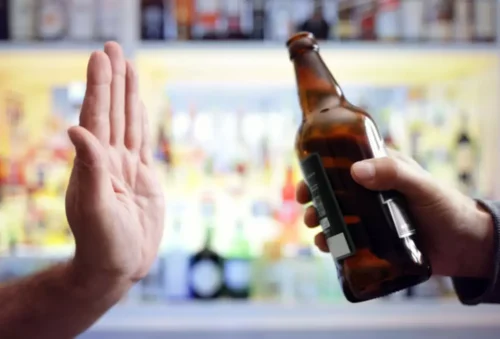In addition, the editor of this article has spent the last 15 years as a health editor, covering all things health, fitness, nutrition, and wellness and adheres to the highest journalistic standards. Your body’s systems bounce back over time, but after about 30 days, you’ll start seeing a difference. “Your skin has had a month to absorb all the hydration and nutrients and B vitamins that your body hadn’t been getting while you were drinking, so this is when you’ll see noticeable improvements to your skin,” says Dr. Mosquera. There’s also likely to be some weight loss within a month, due to the absence of the calories you were ingesting in alcohol (as long as you haven’t swapped them for equally high-calorie comfort foods). While these areas may take the greatest hit from regular drinking, they aren’t the only ones affected.
Scientifically Proven Benefits of Wine Consumption
Any alcohol is dangerous when used, whether it’s liquor, beer, or wine. With alcohol use, a person isn’t necessarily addicted to the drug, but it still causes major problems in their life. Abusing alcohol can result in physical, mental and spiritual distress as well as problems at work, home or school. Five ounces should be a standard glass of wine according to health experts.
Fire heavily damages SW Redmond manufactured home; cause traced to failed extension cord
This list contains several of the most common substances of abuse, but people struggle with abuse of countless other drugs. Alcohol is a legal intoxicating substance in the United States if the person is at least 21 years old. Despite its legal status, about 17 million adults, ages 18 and older, struggle with alcohol use disorder, https://ecosoberhouse.com/ or alcoholism. If you’re considering a break from alcohol, it might also be helpful to think about why you drink. If drinking is your go-to way to blow off steam after a busy week, schedule a booze-free, self-care activity for Friday afternoons, like indulging in a hobby you enjoy or a pampering session like a massage.
- We are no longer supporting IE (Internet Explorer) as we strive to provide site experiences for browsers that support new web standards and security practices.
- Various components in wine—such as proteins from grapes, yeasts, molds, or additives (like sulfites) can trigger reactions.
- There are both physical and behavioral clues that someone might be experiencing a problem with substance use.
- Our writers and reviewers are experienced professionals in medicine, addiction treatment, and healthcare.
What are the potential risks associated with excessive wine consumption?
Consider talking with someone who has had a problem with drinking but has stopped. Let’s explore the pros and cons of drinking wine to gain a better understanding. This is because the liver typically oxidizes alcohol through a series of steps to form water and carbon dioxide. When there is too much alcohol, the intermediate is wine addictive molecules inhibit the normal breakdown of fat in the liver. This causes a build-up of fatty compounds in the liver, causing fatty liver or early alcoholic liver disease. In other words, breast cancer accounts for over half of the additional cancer risk in women who drink moderately but do not smoke.
Wine generally contains more than twice the alcohol content of beer by volume, and overconsumption can lead to severe intoxication and other harmful effects. Untreated wine addiction can also damage your relationships and cause problems at work is wine addictive or school. In fact, red wine has up to 10 times more resveratrol than white wine (26). Whether moderate wine intake benefits heart health is up for debate as research in this area continues (19).
- As you consume wine over time, your body becomes accustomed to its effects, requiring higher doses to achieve the same level of intoxication.
- It’s tempting to assume that because heavy alcohol consumption is very bad, lesser amounts must be at least a little bad.
- In addition to getting appropriate treatment, there are things that you can do that will make it easier to cope and aid in your recovery.
- This is because excessive alcohol consumption is linked to high blood pressure (BP).
- Nonetheless, many public health organizations feel and espouse the necessity of banning red wine altogether, along with other alcoholic drinks.
- However, drinking more than a couple of glasses of wine each day, or drinking alcohol in excess over time, can also damage your long-term health and wellbeing.
Substance Use Disorders
“It appeals to people with less income, but also maybe with a little bit more skepticism” about those aspects of the traditional wine scene. They also explain that our emotional state after a stiff drink may be significantly influenced by the context of consumption, how the drink is advertised, and how much alcohol it contains. Dr. Liji Thomas is an OB-GYN, who graduated from the Government Medical College, University of Calicut, Kerala, in 2001. Liji practiced as a full-time consultant in obstetrics/gynecology in a private hospital for a few years following her graduation.
What is a Safe Amount of Wine to Drink?
They can be set in motion by past memories or current environmental cues relating to substance use and are thought to be a force behind relapse, although they are not a clinically consistent predictor of relapse. Any cue with emotional significance registers on the brain’s amygdala, which then activates the nucleus accumbens and its dopamine neurons. Their activation gives rise to the sense of motivation, experienced as a highly focused urge to seek the substance. While consumption of any illicit drug can be dangerous from a toxicological perspective, it can also create problems from a behavioral perspective. Intoxication with alcohol is a major cause of traffic accidents and violence to others.
- Additionally, researchers suggest that higher levels of catechins and anthocyanins in red wines might also contribute to migraine.
- In fact, it may have adverse effects on development, growth, intelligence and behavior — which may affect the child for the rest of its life (63).
- Cravings intrude on thought processes, create considerable distress, and focus attention on immediately satisfying the desire for the substance.
- Five ounces of wine has approximately 12 percent ABV, while 12 ounces of beer has about 5 percent ABV.



